5 books about Late Medieval Engl
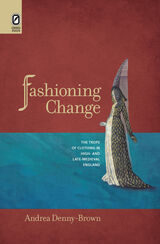
Fashioning Change
The Trope of Clothing in High- and Late-Medieval England
Andrea Denny-Brown
The Ohio State University Press, 2012
Medieval European culture was obsessed with clothing. In Fashioning Change: The Trope of Clothing in High-and Late-Medieval England, Andrea Denny-Brown explores the central impact of clothing in medieval ideas about impermanence and the ethical stakes of human transience. Studies of dress frequently contend with a prevailing cultural belief that bodily adornment speaks to interests that are frivolous, superficial, and cursory. Taking up the vexed topic of clothing’s inherent changeability, Denny-Brown uncovers an important new genealogy of clothing as a representational device, one imbued with a surprising philosophical pedigree and a long history of analytical weightiness.
Considering writers as diverse as Boethius, Alain de Lille, William Durand, Chaucer, and Lydgate, among others, Denny-Brown tracks the development of a literary and cultural trope that begins in the sixth century and finds its highest expression in the vernacular poetry of fifteenth-century England. Among the topics covered are Boethian discourses on the care of the self, the changing garments of Lady Fortune, novelty in ecclesiastical fashions, the sartorial legacy of Chaucer’s Griselda, and the emergence of the English gallant. These literary treatments of vestimentary variation—which develop an aesthetics of change itself—enhance our understanding of clothing as a phenomenological and philosophical category in medieval Europe and illustrate the centrality of the Middle Ages to theories of aesthetics, of materiality, and of cultural change.
[more]
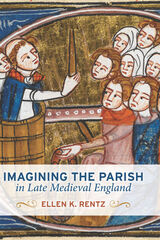
Imagining the Parish in Late Medieval England
Ellen K. Rentz
The Ohio State University Press, 2015
Collective worship and the ritual life of the local parish mattered deeply to late medieval laypeople, and both loom large in contemporary visual and vernacular culture. The parish offered an important framework for Christians as they negotiated the relationship between individual, community, and God. And as a place where past, present, and future came together, the parish promised an ongoing relationship between the living and the dead, positioning the here and now of the local parish in the long trajectory of eschatological time.
Imagining the Parish in Late Medieval England explores the ways in which Middle English literature engages the idea of lay spiritual community and the ideal of parochial worship. Ellen K. Rentz pairs nuanced readings of works such as Piers Plowman,Handlyng Synne, and the Prick of Conscience with careful analysis of contemporary sermons, spiritual handbooks, and liturgical texts as well as a wide range of visual sources, including wall paintings and stained glass. This new study examines how these texts and images locate the process of achieving salvation in the parish and in the work that parishioners undertook there together.
Imagining the Parish in Late Medieval England explores the ways in which Middle English literature engages the idea of lay spiritual community and the ideal of parochial worship. Ellen K. Rentz pairs nuanced readings of works such as Piers Plowman,Handlyng Synne, and the Prick of Conscience with careful analysis of contemporary sermons, spiritual handbooks, and liturgical texts as well as a wide range of visual sources, including wall paintings and stained glass. This new study examines how these texts and images locate the process of achieving salvation in the parish and in the work that parishioners undertook there together.
[more]
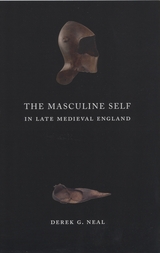
The Masculine Self in Late Medieval England
Derek G. Neal
University of Chicago Press, 2008
What did it mean to be a man in medieval England? Most would answer this question by alluding to the power and status men enjoyed in a patriarchal society, or they might refer to iconic images of chivalrous knights. While these popular ideas do have their roots in the history of the aristocracy, the experience of ordinary men was far more complicated.
Marshalling a wide array of colorful evidence—including legal records, letters, medical sources, and the literature of the period—Derek G. Neal here plumbs the social and cultural significance of masculinity during the generations born between the Black Death and the Protestant Reformation. He discovers that social relations between men, founded on the ideals of honesty and self-restraint, were at least as important as their domination and control of women in defining their identities. By carefully exploring the social, physical, and psychological aspects of masculinity, The Masculine Self in Late Medieval England offers a uniquely comprehensive account of the exterior and interior lives of medieval men.
Marshalling a wide array of colorful evidence—including legal records, letters, medical sources, and the literature of the period—Derek G. Neal here plumbs the social and cultural significance of masculinity during the generations born between the Black Death and the Protestant Reformation. He discovers that social relations between men, founded on the ideals of honesty and self-restraint, were at least as important as their domination and control of women in defining their identities. By carefully exploring the social, physical, and psychological aspects of masculinity, The Masculine Self in Late Medieval England offers a uniquely comprehensive account of the exterior and interior lives of medieval men.
[more]
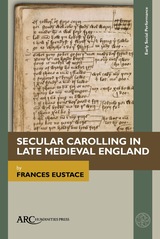
Secular Carolling in Late Medieval England
Frances Eustace
Arc Humanities Press, 2022
This study shows the importance of carolling in the celebrations and festivities of medieval Britain and demonstrates its longevity from the eleventh century to the sixteenth. It illustrates the flexibility of the English carole form for adaptation to include content in high and low registers and its suitability for use on all occasions and by different communal peer groups. Although the vast majority of extant texts in carol form from the late medieval period are religious in subject content, secular carolling was far more prevalent than the textual record implies. The dance-song elements of the medieval carole were so strongly woven into the vernacular cultural fabric of the British Isles that their threads can be traced through the folk songs and dances of subsequent centuries. This study contextualizes the written evidence and re-integrates the various components of the activity in order to illuminate our understanding of the universally popular medieval, participatory, pastime of carolling.
[more]
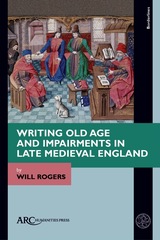
Writing Old Age and Impairments in Late Medieval England
Will Rogers
Arc Humanities Press, 2021
The old speaker in Middle English literature often claims to be impaired because of age. This admission is often followed by narratives that directly contradict it, as speakers, such as the Reeve in Chaucer's Canterbury Tales or Amans in Gower's Confessio Amantis, proceed to perform even as they claim debility. More than the modesty topos, this contradiction exists, the book argues, as prosthesis: old age brings with it debility, but discussing age-related impairments augments the old, impaired body, while simultaneously undercutting and emphasizing bodily impairments. This language of prosthesis becomes a metaphor for the works these speakers use to fashion narrative, which exist as incomplete yet powerful sources.
[more]
READERS
Browse our collection.
PUBLISHERS
See BiblioVault's publisher services.
STUDENT SERVICES
Files for college accessibility offices.
UChicago Accessibility Resources
home | accessibility | search | about | contact us
BiblioVault ® 2001 - 2024
The University of Chicago Press









